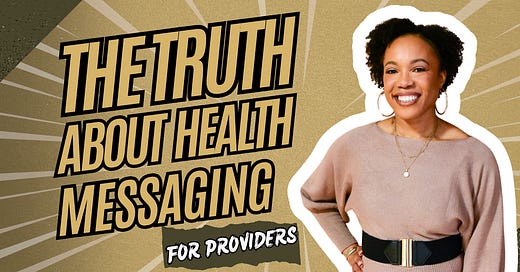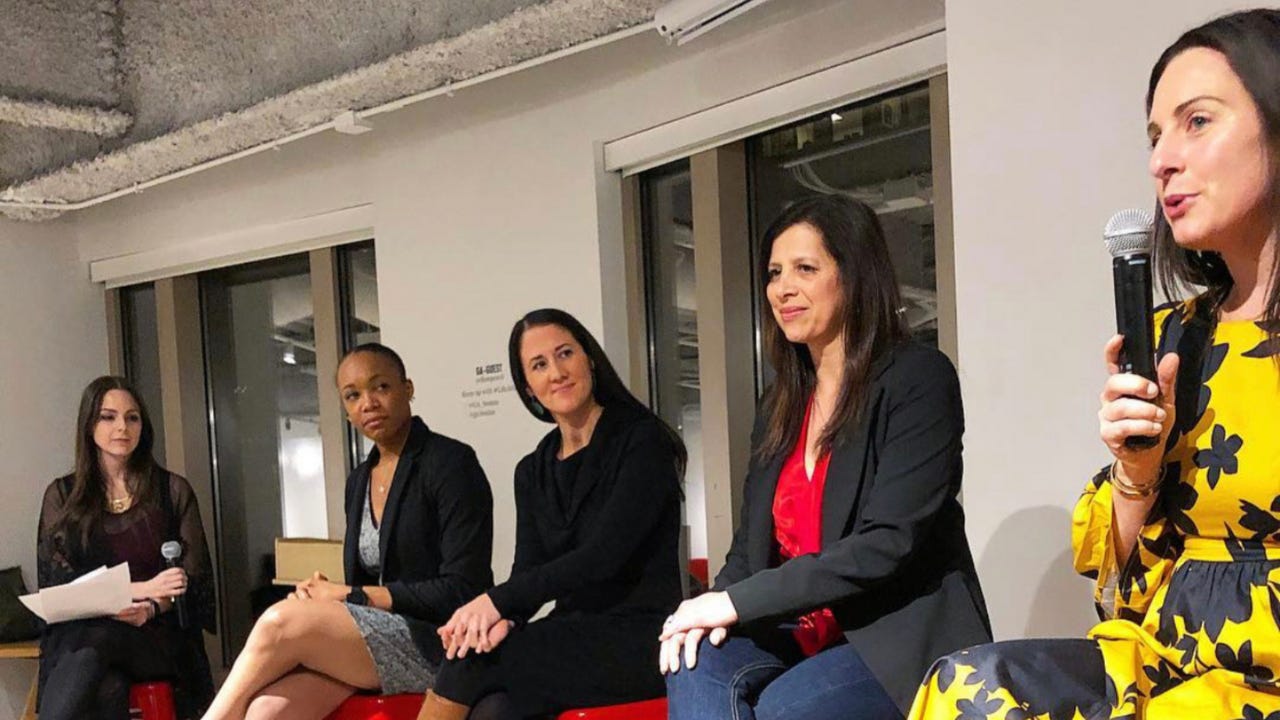Why I Stopped Waiting for the “Right Way” to Talk About Health
The stories we tell in health education matter—and some of them do more harm than good.
When I first started as a health coach, I was honored anytime I was invited to speak. However, there was one particular panel on which I spoke that highlighted why the health and wellness space isn’t the most welcoming place.
When I was asked to speak on this particular panel, I was excited because I valued the opportunity to bring a Black woman’s perspective to a space that often isn’t inclusive of my cultural experiences. At first, the panel was going well, but in the middle of answering one of the moderator's questions, I could see one of the panelists blatantly roll her eyes. It was noticeable not only to me and the panelist but also to the audience.
Because this particular panelist was well-known in Boston, I sensed a shift in my energy, as well as that of the audience. While I attempted to recover, that interaction left me shaken. As much as I’d hate to admit it, it was the best thing that could ever have happened to me at the beginning of my career.
It taught me a crucial lesson: know your audience!
I accepted this opportunity without asking any questions, because I wanted to share my lived experience and offer a different perspective to the conversation. However, the question I neglected to ask before agreeing to the panel was who the actual audience I would be speaking to.
That matters for a variety of reasons, but mainly that I was speaking about an experience that many in the audience couldn’t resonate with. I was expecting the panelist and audience to meet me where I was, without building the proper foundation.
And, guess what, I’m not the only health professional who has done that.
Too often, I hear health educators, coaches, and clinicians sharing health recommendations that overlook the social determinants of health and place the entire burden of health on the individual. That certainly didn’t reflect the reality of my clients—or me.
Although I deeply value health education and consider it a path toward improving health literacy, I am aware that not all educational materials are created equally. Oftentimes, there is little to no recognition of a client’s cultural background, food preferences, or lifestyle circumstances.
Instead, clients are often found to be “noncompliant” when, in reality, the plan they are supposed to follow is what was created with them in mind. I’ve seen this time and time again with clients I’ve worked with who also work with other providers. It’s not that clients don’t care about their health.
It’s that there are unique barriers they face that haven’t been addressed in that plan. Additionally, providers expect clients to have health education that they often do not possess. Even if they wanted to apply these well-written health plans, they wouldn’t know where to start.
That’s why, for the past few years, I’ve found myself coming back to this question of how to create health content that educates rather than harms. That is a question that has led me down various pathways, but it always comes back to the harsh reality that educators, coaches, and clinicians want to do better, yet haven’t been given the tools to do so.
Here’s what I know for sure:
✅ Black women deserve the same quality of care as everyone else.
✅ Health content should never shame people for circumstances beyond their control.
✅ We can craft inclusive, trauma-informed messages that balance clarity and care.
We certainly don’t need to be perfect, and I’ll be the first to admit that I’ve made a lot of silly mistakes along the way. However, I take responsibility for those times when I got it wrong, and I commit to doing better.
After nine years of writing, teaching, and communicating about health, I have learned the importance of creating educational content that reflects my values and my audience’s lived experiences. Over the next few weeks, we will be sharing more information on how to write health content that educates without harm.
Like what you’re reading?! Here’s a simple way to support my work:





